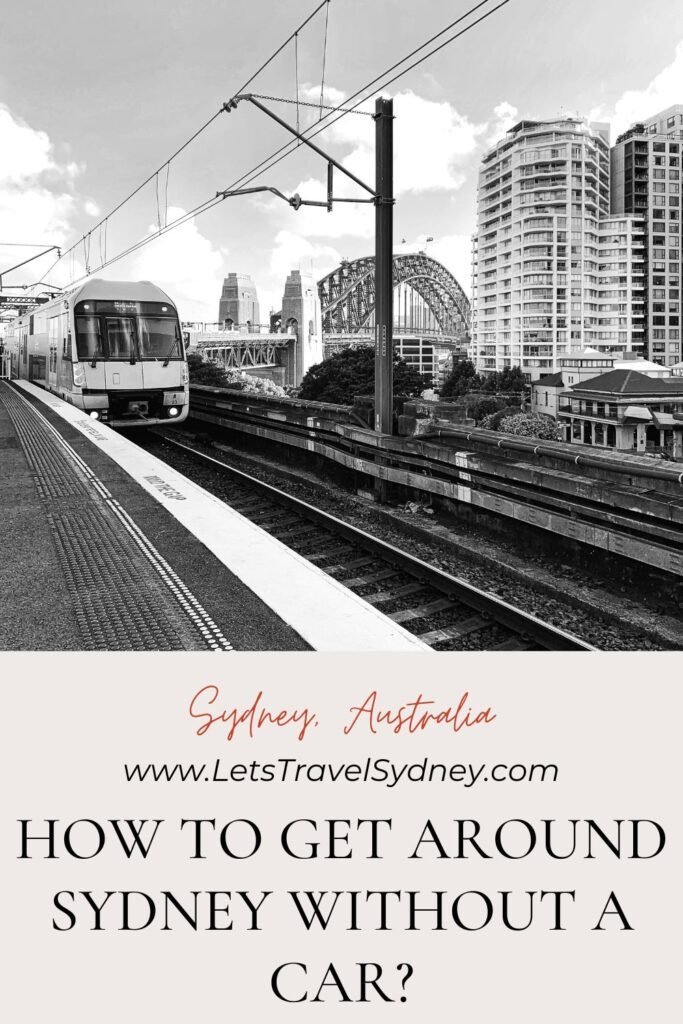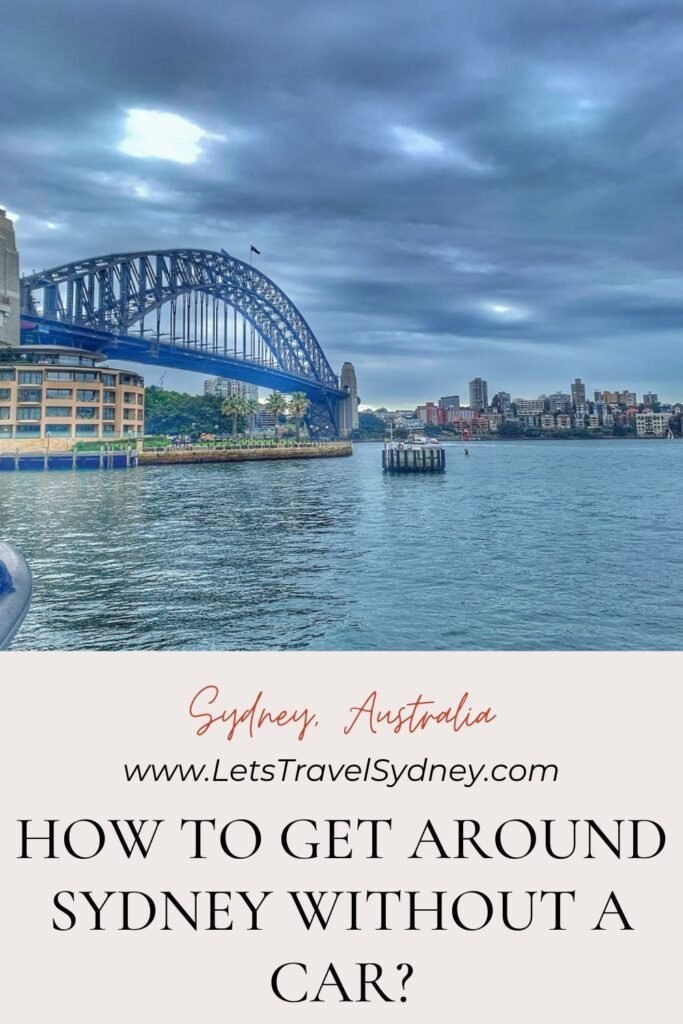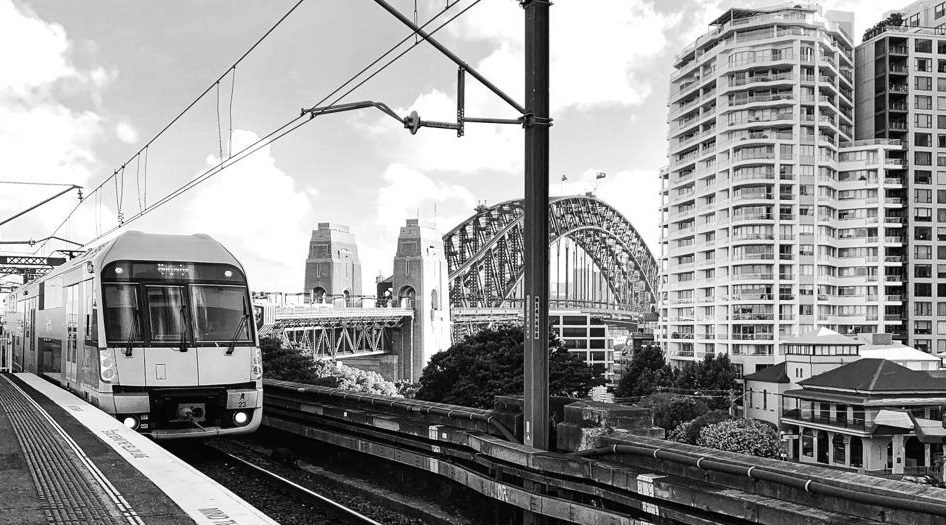How to Get Around Sydney Without a Car? (2025)
When visiting Sydney for the first time, navigating the city without a car may seem daunting, and you may question how to get around Sydney without a car. As a resident who spent many years exploring Sydney without owning or renting a car, I can assure you that it’s entirely feasible.
Sydney boasts an exceptional public transportation network I relied on extensively in the city. The options are plentiful and efficient, from buses and trains to ferries and light rail. Additionally, walking around the Central Business District (CBD) is convenient and a delightful way to soak in the city’s atmosphere and discover its hidden gems.
So, fret not about being careless in Sydney. With its comprehensive public transport system and pedestrian-friendly CBD, getting around the city is manageable and enjoyable.
This article may contain affiliate links, meaning if you decide to purchase via my links, I may earn a commission at no additional cost to you. For complete information, please see our affiliate disclaimer here.
How to Get Around Sydney Without a Car?
Discovering Sydney without the confines of a car opens up a world of possibilities for exploration. As a city renowned for its vibrant culture, iconic landmarks, and stunning natural beauty, Sydney is perfect for travellers who wish to immerse themselves in its essence, unencumbered by driving constraints.
Sydney offers many diverse transportation options, from its efficient public transport network to pedestrian-friendly streets and scenic waterways. Understanding and embracing these alternatives allows you to navigate the city seamlessly and quickly uncover its hidden treasures.
Beyond mere convenience, experiencing Sydney without a car is profoundly essential. It allows for a deeper connection with the city’s rhythm, an opportunity to engage with local communities, and a chance to appreciate its environmental sustainability efforts.
Public Transportation
Sydney, a bustling metropolis renowned for its cultural diversity and stunning landscapes, offers an array of public transportation options to cater to the needs of both visitors and locals. These transportation services encompass five primary modes:
- Sydney Metro: The newest addition to the city’s transportation network, the Sydney Metro, provides swift and efficient travel across various suburbs. With state-of-the-art trains and modern stations, it offers a seamless commuting experience for passengers.
- Sydney Trains: Sydney Trains are the backbone of the city’s public transportation system, connecting suburbs to the central business district (CBD) and beyond. Operating on an extensive network of rail lines, they ensure convenient access to key destinations throughout the metropolitan area.
- Buses: Sydney’s buses form a comprehensive network that complements other modes of transportation, offering accessibility to areas not directly served by trains or light rail. With frequent services and numerous routes, buses provide flexibility and convenience for commuters travelling within and beyond the city limits.
- Light Rail: Sydney’s light rail system enhances connectivity within the urban landscape, facilitating easy movement between key precincts and neighbourhoods. Operating modern trams along designated routes, the light rail offers passengers a comfortable and environmentally friendly mode of travel.
- Ferries: Sydney’s iconic ferry services traverse the city’s stunning harbour, offering passengers a picturesque journey with breathtaking views of the Sydney Opera House, Harbour Bridge, and waterfront landmarks. Ferries serve as both a mode of transportation and a popular tourist attraction, connecting various waterfront destinations with the CBD and surrounding areas.
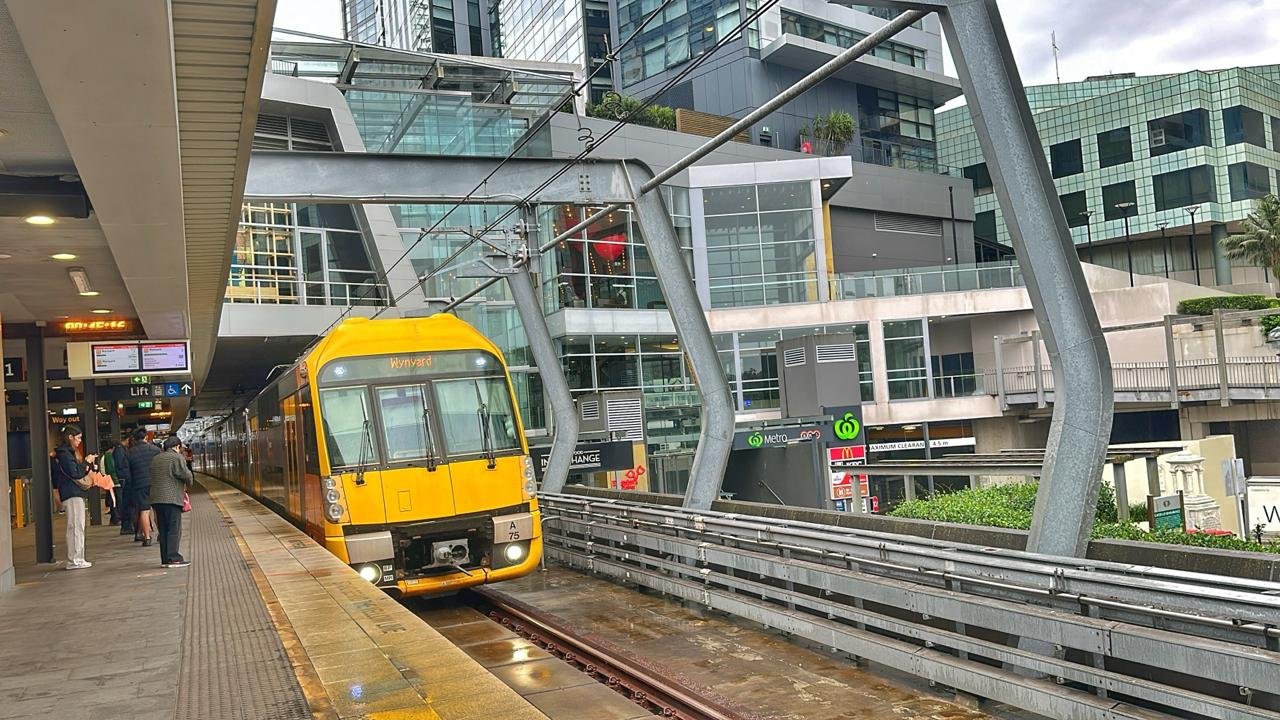
Travellers typically require a credit/debit card or an Opal transportation card to access these transportation services. Cash payments are not accepted onboard or at stations. Acquiring an Opal transportation card incurs no initial fee. However, to commence travel, users must load a minimum of $20 for adults and $10 for children onto the card.
The Opal card offers discounted rates on select public transport options. When using contactless payment methods, passengers are charged the same fare as an Adult Opal card user. They also enjoy the following Opal benefits: a $2 discount for each mode transfer within a single journey (except for light rail to Sydney Ferries, barring Circular Quay), daily, weekly, and Friday/weekend fare caps, and a 30% reduction on metro/train, bus, and light rail fares outside peak hours. It’s important to note that concession fares are inaccessible via contactless payments like credit/debit cards.
Passengers must tap on and off using their chosen payment method when boarding and alighting from trains, buses, light rail vehicles, and ferries. This system ensures accurate fare calculation and contributes to the efficient operation of Sydney’s public transportation network.
In essence, Sydney’s diverse public transportation options provide travellers with convenient and reliable means of navigating the city’s bustling streets and diverse suburbs. Whether exploring cultural attractions, dining precincts, or natural wonders, visitors can rely on these transportation services to enhance their Sydney experience while minimising the need for private vehicles and promoting sustainable travel practices.
Consult the Transport for New South Wales (TfNSW) website for the latest updates on routes, fares, and public transportation schedules.
Water Transport
Ferries are vital in Sydney’s transportation network, connecting key hubs like Darling Harbour and Circular Quay to various suburbs, including popular destinations like Manly Beach. While these main terminals serve as focal points for ferry travel, numerous routes extend throughout the city’s harbour, offering passengers breathtaking views and convenient access to waterfront communities.
Government-operated TfNSW and private operators facilitate water transport in Sydney. Government-operated ferries, managed by TfNSW, require passengers to use credit/debit cards or Opal transportation cards for fare payment. Conversely, private-operated ferries offer flexibility in ticket purchasing, allowing travellers to buy tickets at designated counters or utilise credit/debit cards for payment when tapping in. Whether for government or private services, passengers can conveniently access Sydney’s water transport network while enjoying scenic views and seamless journeys across the harbour.
Whether embarking on a leisurely journey to Manly or simply enjoying a scenic cruise at sunset, ferries provide an unparalleled opportunity to experience Sydney’s beauty from a unique perspective. With their spectacular views and picturesque voyages, ferries epitomise the charm and allure of Sydney’s waterfront, making them a favoured mode of transport for locals and visitors.
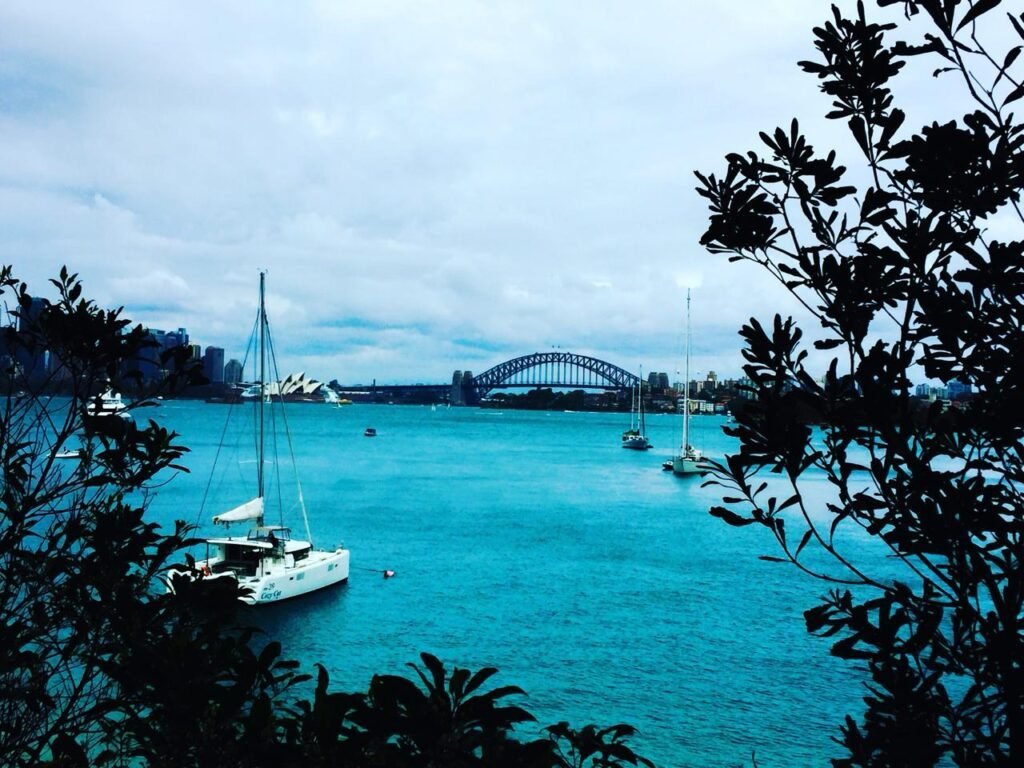
Walking
Sydney’s urban landscape boasts many pedestrian-friendly streets, inviting locals and visitors to explore the city on foot. From the vibrant CBD to the charming neighbourhoods lining the harbour, Sydney offers many walkable areas with cultural attractions, dining options, and scenic vistas. It’s worth noting that some suburban regions of Sydney feature hilly terrain with steep ascends and descends.
The CBD stands out as a pedestrian’s paradise, with wide boulevards, bustling plazas, and pedestrian-only zones like Pitt Street Westside Shopping Centre and Martin Place. Here, pedestrians can stroll amidst iconic landmarks like the Sydney Tower Eye and historic architectural gems like the Town Hall and the Queen Victoria Building (QVB).
Beyond the CBD, Sydney’s waterfront promenades have breathtaking views and refreshing sea breezes. The iconic Circular Quay precinct, nestled between the Sydney Opera House and Harbour Bridge, provides an idyllic setting for a leisurely waterfront walk. Meanwhile, Darling Harbour’s vibrant precinct offers a picturesque blend of entertainment, dining, and recreational activities along its pedestrian-friendly foreshore.
Venturing further afield, Sydney’s coastal walkways showcase the city’s natural beauty, meandering along sandy beaches, rugged cliffs, and tranquil parks. The Bondi to Coogee Coastal Walk, renowned for its stunning ocean views and sculptural coastal art installations, offers a scenic journey through Sydney’s eastern suburbs.

In addition to its scenic charm, walking in Sydney offers practical benefits, including access to public transportation hubs, cultural institutions, and hidden gems tucked away in laneways and alleys. Moreover, Sydney’s commitment to pedestrian safety and infrastructure enhancements, such as widened footpaths and dedicated pedestrian crossings, ensures a pleasant and secure walking experience.
Cycling
Cycling in Sydney offers a delightful and eco-friendly way to explore the city’s diverse landscapes and attractions. With an extensive network of bike paths, dedicated lanes, and scenic routes, cyclists can easily navigate the city and enjoy the many benefits of pedal-powered transportation. According to the City of Sydney, 17% of the residents use a bicycle weekly.
While I haven’t personally utilised bicycles in Sydney, the city’s bike-sharing programs and bike rental services offer convenient bicycle access for residents and visitors. These programs provide a cost-effective and sustainable alternative to traditional modes of transport, promoting health and reducing environmental impact.

Cycling presents numerous advantages as a mode of transportation in Sydney. It offers a healthy and enjoyable way to commute and helps reduce traffic congestion and carbon emissions. Additionally, cycling allows riders to bypass parking challenges and explore areas inaccessible by car, providing a unique perspective of the city’s hidden gems.
Sydney has a variety of scenic cycling routes catering to riders of all skill levels. The iconic Sydney Harbour Bridge offers a picturesque crossing with stunning views of the Opera House and harbour. Meanwhile, the Cooks River Cycleway provides a serene 30-kilometre path along the water’s edge, perfect for leisurely rides amidst lush greenery.
Other recommended cycling routes include the Bondi to Coogee Coastal Path, which winds along the stunning coastline, and the Parramatta Valley Cycleway, which offers a peaceful 15-kilometre journey through riverside parks and historical sites. Use Cycleway Finder to find cycling routes in the city.
In addition to designated bike paths, Sydney features numerous bike-friendly areas and amenities, including bike racks, repair stations, and cyclist-friendly cafes. By embracing cycling as a mode of transportation, residents and visitors alike can experience the city in a whole new way, enjoying the freedom and flexibility of two wheels while discovering Sydney’s beauty and charm.
You can bring your bicycle on Sydney Metro or Intercity trains anytime, at no cost. However, your bicycle mustn’t obstruct any doors or passages on board. Similarly, you can bring your bike along on regional trains.
Ride-Sharing and Taxis
Ride-sharing and taxi services offer convenient and faster transportation alternatives in Sydney, catering to diverse preferences and travel needs. Understanding and employing the options effectively can enhance the commuting experience while providing cost-effective solutions.
Popular ride-sharing apps like Uber, Ola, and DiDi have gained widespread popularity in Sydney. These apps offer seamless booking processes and reliable service. Users can request rides, track their driver’s location in real time, and pay electronically, simplifying the transportation experience for passengers and drivers.
Several tips can optimise the experience when utilising taxis and ride-sharing services. First, accurately input your pickup and drop-off locations to avoid confusion and delays. Additionally, consider requesting rides during off-peak hours to benefit from lower fares and reduced wait times. It’s also advisable to communicate specific preferences or requirements to your driver beforehand to ensure a comfortable journey.
Regarding cost comparison, ride-sharing services often offer competitive rates compared to traditional taxis, especially for shorter trips within the city. However, taxis may sometimes be more cost-effective for longer journeys or peak hours, particularly considering surge pricing on ride-sharing apps during high-demand periods. Ultimately, the choice between ride-sharing and taxis depends on distance, time of day, and personal preferences regarding convenience and pricing.
By understanding the nuances of ride-sharing and taxi services in Sydney and implementing these tips effectively, commuters can easily navigate the city while making informed decisions about their transportation options. Whether opting for the convenience of ride-sharing apps or the familiarity of traditional taxis, passengers can enjoy efficient and reliable travel experiences tailored to their needs and preferences.
Alternative Transportation Options
In Sydney, alternative transportation options beyond conventional modes like public transit and taxis are gaining popularity. These solutions offer diverse solutions for commuters and travellers. Understanding these alternatives and their benefits can enhance mobility while promoting sustainable and inclusive transportation practices.
Electric scooters, e-bikes and skateboards have emerged as convenient and environmentally friendly modes of urban transportation in Sydney. Companies like Lime and Bird offer app-based rental services, allowing users to locate and unlock e-bikes, electric scooters and skateboards for short-distance trips. These scooters cost around $1 to unlock and $0.30 to $0.45 per minute to hire.
With their compact size and maneuverability, these micro-mobility devices provide efficient last-mile connectivity, complementing existing transportation networks and reducing reliance on cars.
Carpooling and car-sharing services present another innovative solution to Sydney’s urban mobility challenges. Platforms like GoGet and Uber Carshare (formerly known as Car Next Door) facilitate carpooling arrangements and short-term vehicle rentals among users, promoting resource sharing and reducing traffic congestion and carbon emissions. By pooling resources and sharing rides, commuters can save on transportation costs while contributing to a more sustainable transportation ecosystem.
Furthermore, accessibility options for travellers with disabilities are essential in promoting inclusive transportation in Sydney. Public transit operators like Transport for NSW provide accessible features such as low-floor buses, wheelchair ramps, and priority seating areas to accommodate passengers with mobility impairments. The first time I observed buses lowering to accommodate wheelchairs and elderly passengers, I was in awe of the care provided for disabled travellers.
Additionally, ride-sharing services like Uber and Ola offer options for wheelchair-accessible vehicles, ensuring that individuals with disabilities can access transportation services conveniently and independently.
Tips for Efficient Travel in Sydney Without a Car
Navigating Sydney without a car can be seamless and rewarding with the right approach. Here are some tips for efficient travel in the city:
- Plan Your Routes: Before setting out, familiarise yourself with Sydney’s public transportation network and map your routes. Consider using transportation apps like TfNSW for real-time updates on schedules and service disruptions.
- Utilise Opal Transportation Card: Invest in an Opal transportation card for easy access to buses, trains, ferries, and light rail. Load sufficient funds onto your card to enjoy discounted fares and daily, weekly, and Sunday fare caps.
- Off-Peak Travel: Opt for off-peak travel whenever possible to avoid crowds and save on fares. Sydney’s public transportation system offers reduced rates during non-peak hours.
- Walking: Enjoy Sydney’s pedestrian-friendly areas, especially in the CBD and popular attractions. Walking allows you to soak in the city’s atmosphere and helps you discover hidden gems inaccessible by car.
- Cycling: Consider renting a bike or utilising bike-sharing programs to explore Sydney’s bike paths and scenic routes. Cycling offers a sustainable and enjoyable way to get around, particularly in areas with limited public transportation access.
- Ride-sharing and Taxis: Use ride-sharing apps or taxis for convenience and flexibility, especially for late-night travel or reaching destinations inaccessible by public transit.
- Water Transport: Explore Sydney’s harbour and waterfront areas via ferries, which offer stunning views of the city skyline and iconic landmarks. Consider taking a ferry to popular destinations like Manly Beach or Watsons Bay.
- Stay Informed: Stay updated on transportation news, service changes, and special events that may affect your travel plans. Follow Transport for NSW on social media or sign up for alerts to receive timely notifications.
- Travel Light: Minimise baggage and carry only essentials to make navigating public transportation more accessible and more comfortable.
- Be Flexible: Embrace spontaneity and be open to exploring alternative routes or modes of transportation. Flexibility can lead to unexpected adventures and memorable experiences while travelling in Sydney without a car.

Sustainability and Eco-Friendly Travel
Embracing sustainability and eco-friendly travel practices in Sydney without a car reduces your carbon footprint and enhances your overall travel experience. Here are some tips for incorporating sustainable practices into your journey:
- Utilise Public Transportation: Take advantage of Sydney’s extensive public transportation network, including buses, metros, trains, ferries, and light rail. Using public transit instead of driving reduces greenhouse gas emissions and contributes to cleaner air in the city.
- Choose Active Transportation: Walk or cycle whenever possible to explore Sydney’s neighbourhoods, parks, and attractions. Walking and cycling are environmentally friendly and promote physical activity and well-being.
- Support Bike-Sharing Programs: Use bike-sharing programs or rent bicycles around the city. Sydney offers numerous bike lanes and scenic cycling routes, making biking a convenient and sustainable mode of transportation.
- Practice Waste Reduction: Bring reusable water bottles, bags, and containers to minimise single-use plastic waste. Sydney features numerous water stations along its streets and train stations, providing convenient access to refill water bottles.
Also Read: The Bloody Long Walk in Sydney
Closing Notes
Exploring Sydney without a car opens up a world of possibilities for travellers. The city offers diverse transportation options that cater to every preference and budget, from the efficiency of public transit to the freedom of walking and cycling. Navigating the city’s vibrant streets and scenic waterfronts is both smooth and rewarding.
By embracing sustainable practices, utilising alternative modes of transportation, and staying informed about transportation options, travellers can experience Sydney’s cultural riches, natural beauty, and urban charm in an eco-friendly and responsible manner.
So, pack your walking shoes, load up your Opal transportation card, and embark on a journey through Sydney’s diverse landscapes and vibrant neighbourhoods. With an open mind and a spirit of exploration, navigating the city without a car becomes not just a means of transportation but an enriching experience that allows you to connect with the heart and soul of this iconic Australian metropolis.
How Can You Support Me?
You know I love coffee, so you can buy me a coffee – Buy Me Coffee!
If you enjoyed reading this article, please comment, share, and tweet so others can enjoy it.
Do you have any questions or suggestions? Or do you want to chat? You can write to me at LetsTravelSydney@gmail.com.
PIN for later reference – How to Get Around Sydney Without a Car?
